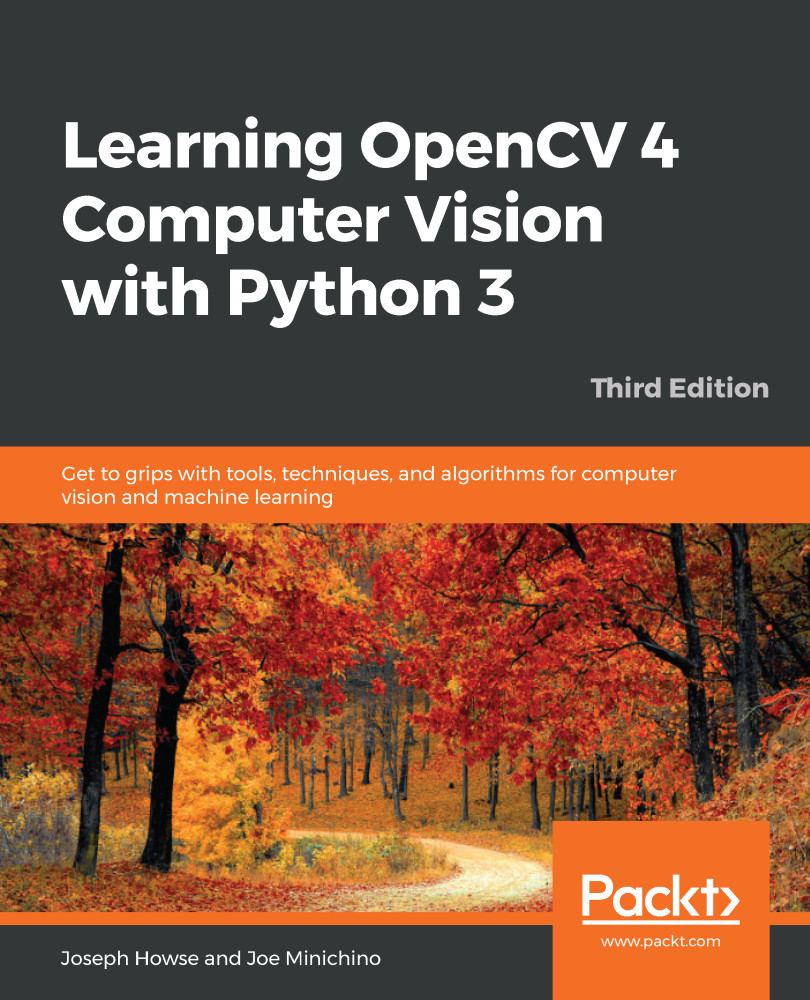Computer vision makes many futuristic-sounding tasks a reality. Two such tasks are face detection (locating faces in an image) and face recognition (identifying a face as a specific person). OpenCV implements several algorithms for face detection and recognition. These have applications in all sorts of real-world contexts, from security to entertainment.
This chapter introduces some of OpenCV's face detection and recognition functionality, along with the data files that define particular types of trackable objects. Specifically, we look at Haar cascade classifiers, which analyze the contrast between adjacent image regions to determine whether or not a given image or sub image matches a known type. We consider how to combine multiple Haar cascade classifiers in a hierarchy so that one classifier identifies a parent region (for our purposes,...


